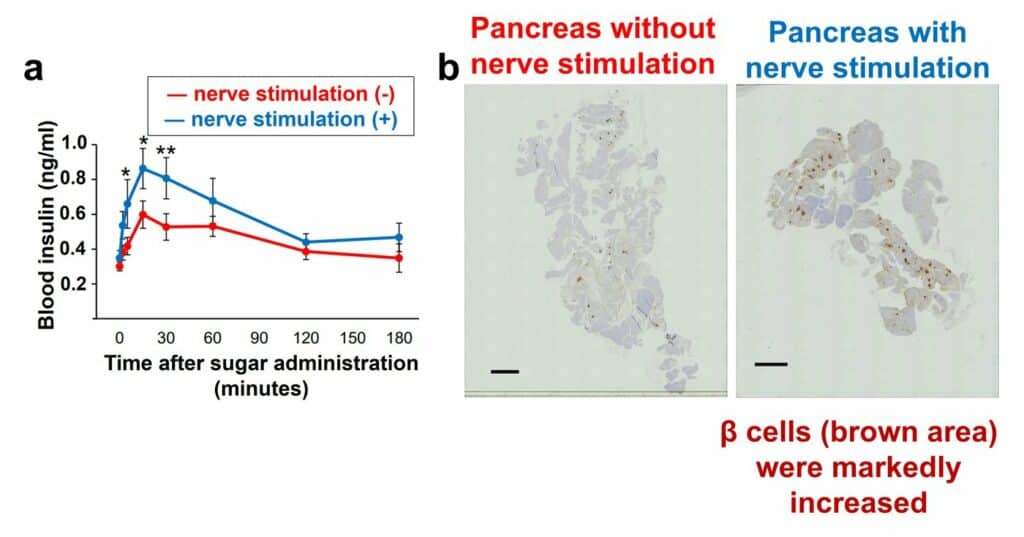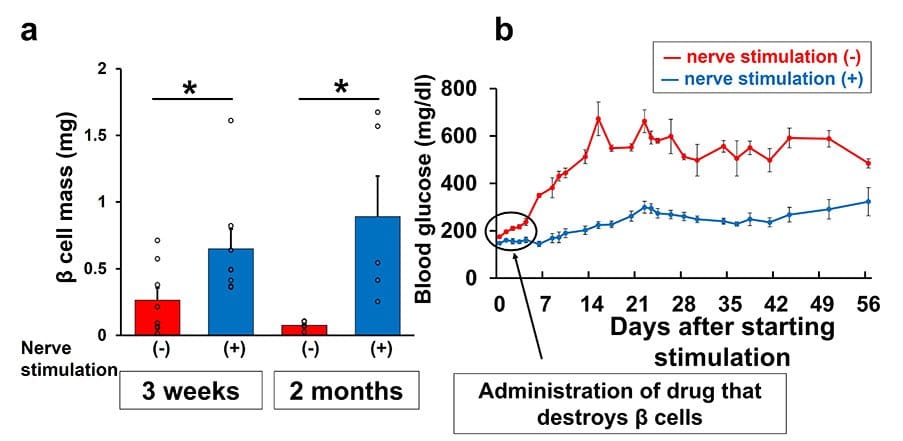A hormone called insulin lowers blood sugar levels, and it’s made by special cells in the pancreas called beta cells. When there aren’t enough of these cells, it can lead to diabetes. Researchers are trying to find ways to increase these beta cells, and now there’s good news.
A research team found that stimulating specific nerves connected to the pancreas in mice could make the beta cells work better and even increase their number. This discovery, led by Associate Professor Junta Imai, Assistant Professor Yohei Kawana, and Professor Hideki Katagiri from Tohoku University, was published in Nature Biomedical Engineering on November 9, 2023.
Imai said, “Using optogenetics, we first developed a means to stimulate the vagus nerve leading to the pancreas individually in mice. This novel method led to a marked elevation in the amount of insulin in the blood when sugar was administered, indicating improved β-cell function.”

A hormone called insulin lowers blood sugar levels, and it’s made by special cells in the pancreas called beta cells. When there aren’t enough of these cells, it can lead to diabetes. Scientists are trying to find ways to increase these beta cells, and now there’s good news.
A research team found that stimulating specific nerves connected to the pancreas in mice could make the beta cells work better and even increase their number. This discovery, led by Associate Professor Junta Imai, Assistant Professor Yohei Kawana, and Professor Hideki Katagiri from Tohoku University, was published in Nature Biomedical Engineering on November 9, 2023.
Imai adds, “We hope our achievements lead to developing new strategies and preventive methods for diabetes. We also expect it to advance our understanding of the mechanisms that regulate the function and number of pancreatic β-cells, as well as the causes of diabetes.”

In conclusion, the study led by researchers at Tohoku University found that when they stimulated specific nerves connected to the pancreas in mice, it made the insulin-producing cells work better and even increased their number. This exciting discovery suggests a potential new way to regenerate cells that produce insulin, which is crucial for managing blood sugar levels in conditions like diabetes. The findings offer hope for future treatments to enhance the function and quantity of these critical cells.
Journal reference:
- Kawana, Y., Imai, J., Morizawa, Y.M. et al. Optogenetic stimulation of vagal nerves for enhanced glucose-stimulated insulin secretion and β cell proliferation. Nature Biomedical Engineering. DOI: 10.1038/s41551-023-01113-2.
